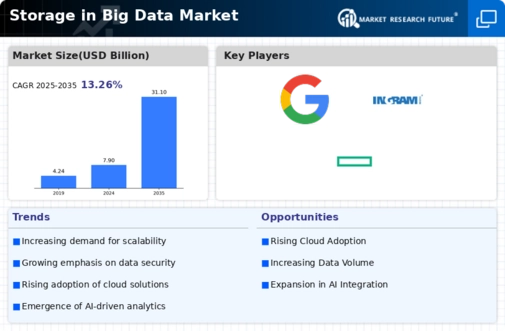Storage in Big Data Market Summary
As per Market Research Future Analysis, the Storage in Big Data Market is projected to grow from USD 7.90 billion in 2024 to USD 31.09 billion by 2035, with a CAGR of 13.26% during the forecast period. The market was valued at USD 7.90 billion in 2024, driven by the increasing demand for digital data storage and the rise of connected devices. The healthcare sector dominated the market in 2022, with significant growth expected in BFSI and IT sectors. North America is anticipated to maintain the largest market share due to substantial investments in data infrastructure.
Key Market Trends & Highlights
Key trends driving the Storage in Big Data Market include the following:
- Market CAGR of 13.26% from 2024 to 2032.
- Healthcare sector held the largest market share in 2022.
- North America is projected to dominate the market with significant investments.
- Software sector led the market in 2022, while hardware showed the fastest growth.
Market Size & Forecast
| 2024 Market Size | USD 7.90 Billion |
| 2035 Market Size | USD 31.09 Billion |
Major Players
Key players include Google Inc., Microsoft Corporation, Amazon Web Services, Oracle Corporation, and Teradata Corporation.















Leave a Comment